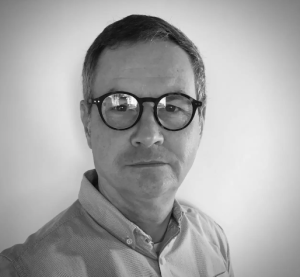Jon Warwick, a consultant anaesthetist at Oxford University Hospitals NHS Foundation Trust and MedResQ Specialist Medical Advisor, has dedicated over two decades to providing anaesthetic care for both routine and emergency surgeries, with a special emphasis on neurosurgery and neurocritical care.
Jon serves as a consultant anaesthetist at Oxford University Hospitals NHS Foundation Trust, where he has dedicated over two decades to providing anaesthetic care for both routine and emergency surgeries.
His career also includes a distinguished period in the Royal Air Force medical branch, following which he embarked on a successful tenure as a professional freelance air ambulance pilot, holding a type-rating for the Lear Jet 35 and serving as First Officer.
Beyond his piloting expertise, Jon has also played a pivotal role in the air ambulance sector as the UK medical director for two leading providers, overseeing more than 3,500 international patient retrieval missions.
We caught up with Jon to discuss his experience.

What initially drew you to the field of anaesthesia, and how did you decide to specialise in neurosurgery and neurocritical care?
There is not really a formal process that recruits medical graduates into a specialty. Rather, you tend to gravitate towards what you enjoy doing, and it is hugely influenced by the experiences that you have as an undergraduate. I remember at medical school (I trained in Birmingham) being sent off to Coventry for a two week anaesthesia attachment, and it was an immensely enjoyable time. I discovered the anaesthetists were all such friendly, approachable, welcoming people, and so completely different to other clinicians who teach you as an undergraduate. They were such approachable doctors, with a great understanding of acute physiology and pharmacology, and used lots of drugs & bits of kit that no one else knew about. And they took the time to talk to me, show me things, and teach me cool stuff. I wanted to be like them.
What motivated you to join the Royal Air Force medical branch, and how did your experience there shape your medical career?
Aeroplanes have always held my fascination, ever since I was a little kid at home, building models of Lancasters and suspending them from my bedroom ceiling. I wanted aircraft to be part of my life, in some way, and always felt that one day I would fly them. Whilst at medical school, we had a 6-week elective study period. I wrote to the Air Force to ask if they would consider having me as a student at The Princess Mary’s Hospital, in RAF Akrotiri. To my amazement they agreed – they didn’t normally take civilian students on attachment, but I guess they saw this as a potential recruitment opportunity. It worked. They treated me as an honorary Pilot Officer, put me up in the mess at entitled rates, and for 6 weeks I had the time of my life. When the time came to return to med school, I now had the seed of what I was maybe going to do – join the Air Force, and be an anaesthetist.
Are there any specific missions or experiences from your time in the RAF that stand out in your memory?
Gosh… where to begin. Several things spring to mind. Before I started anaesthetic training, I spent a year as a station medical officer; a general practice job, with an occupational medicine type of role. I was an honorary member of 63 squadron at RAF Chivenor in North Devon, and spent many hours “back-seat” in Hawk training jets, which really lit my aviation fuse. I was sent to RAF St. Mawgan in Cornwall for a couple of weeks as a locum, and managed to blag my way onto a Nimrod for a trip to Bodo, in Norway. I remember sitting on the jump seat as we descended through cloud, and when we popped out of the blanket of weather we were treated to the most spectacular vista of a snow-covered Norwegian landscape, with jaw-dropping mountains and deep crystal-clear fjords. It was like Lord of the Rings, but on steroids. The view from an aircraft flight deck has to be the most privileged position ever.
The first Gulf war saw me posted to Cyprus, on aeromedical duties. Having been there as a medical student, and now back as an anaesthetist on an aeromedical team, was special. We had a reconnaissance trip planned into an airfield in northern Saudi. The night before saw us in the Akrotiri Officer’s Mess bar, drinking brandy sours and Keo beer. We received the hurried message that our trip had been brought forward to depart that night, and not the following morning… so we hastily packed, and departed in a C-130. We unrolled sleeping bags and got our heads down, to be later woken by the load master as the aircraft was approaching finals. Walking off the aircraft and into a war zone, having been in the Akrotiri mess bar just hours before, was a surreal experience. That brief conflict saw me evacuate a number of casualties back to the UK, the most serious of which were army chefs with significant burns sustained from exploding field kitchens (they had made the mistake of fuelling them with petrol, rather than kerosene…). Who would have thought that the most serious injuries I saw were from cooking. I also remember an army driver who had an unstable c-spine fracture (although thankfully with no neurology), sustained from crashing his Land Rover into a camel on a dark desert road. The camel died. When we collected him from the Saudi hospital we had the difficult task of coordinating how the local herdsman was going to be compensated for the loss of his camel.
Away from medicine, the RAF in those days provided a wealth of opportunity. I’ve always been a keen mountain walker, and I managed to get on a mountain leadership course in Tulloch, Scotland. I also went on an adventurous training trip to Torridon in the NW Highlands, and I remember standing on top of Beinn Alligin on one of those rare Scottish beautiful days, with limitless views beneath a clear azure sky. I’ve been back a couple of times since, but have yet to complete the true jewel of the Torridonian giants: the Liathach traverse. One day…
Could you discuss any recent advancements in patient care technologies or techniques that have impacted patient retrieval missions through your career?
There have been a number of great improvements. Air ambulances are no longer simply airframes with patients strapped into the cabin, but specialist aircraft with bespoke interiors better suited to the task. Transfer kit has become lightweight and more transportable, and medical teams have access to monitoring, drugs and even blood products to properly provide care en-route. Industry accreditation via organisations such as CAMTS and Eurami have contributed to raising standards, and in England the CQC also provides the accreditation that is truly patient focussed.
What are some of the most challenging aspects of international patient retrieval missions that may surprise people?
Internationally, the civilian world is not a level playing field, and ultimately the patient gets only what the industry is willing to pay for. It is an extremely cost-focussed marketplace and the harsh reality is that international patient transfer is expensive, but insurance policies are cheap. It is a fine balance. You might aspire to operate a Rolls-Royce kind of air ambulance service, but ultimately if the insurer only wants to pay for a Reliant Robin, then you have no business. For me, the thrill of now being involved with an assistance company like MedResQ that is truly patient-focussed is a real joy.
In the UK, the NHS is undoubtedly going through a capacity crisis. Hospital bed availability is a daily problem, especially for intensive care. When planned hospital admissions in the NHS are regularly cancelled from lack of capacity, it is extremely hard to coordinate the retrieval of a patient from overseas into an arranged bed. Intensive care beds, in particular, are almost impossible to “book” in advance, so the long-haul retrieval of a patient requiring ICU or high-dependency when back home creates a challenge. Sadly, this is a uniquely British problem; other European countries seldom have this bottleneck to deal with. Patients (or their relatives) often don’t understand this.
Where could we find you outside of work, for example, what hobbies or interests do you pursue?
I am incredibly fortunate to live in a wonderful grade II listed Georgian property in Oxfordshire, and gardening & DIY are high on the agenda. My wife is a multi-talented “creative”, now completely retired from general practice, and we have lots going on with home, family and the arts. We have one grandchild, with another on the way… who would have thought it!! We’ve bought a camper van, and are planning many adventures. I’m a keen but very amateur trumpet player (which I came to fairly late in life), and I’m currently struggling through my grade 7. I’m chairman of our local town band in Witney, which is full of musicians far more talented than me, but I ride on the coat-tails of these giants and take huge pleasure in playing as a “2nd cornet” with this lovely group of enthusiasts.



